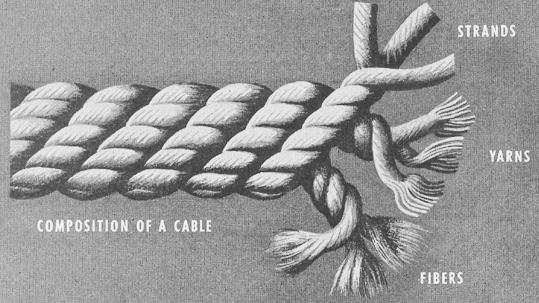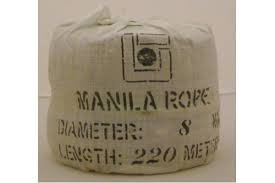|
|
| |
|
|
 Knots have been older than the first written words. In a peat bog in Antrea, a part of a fishing net has been found,
whose age was set at 9200 years. Used knots are not only the oldest but still used knots (sheet bend).
We also know that ancient Greeks, Romans and Egyptians used intricate knots in constructions as lifting devices.
But allso in bridges, surgery and many others knots were already used.
As sailors and cowboys, in earlier times, spent much of their time with rope in their hand (for example: repairing rigging)
new knots were sometimes found. By the journeys of these people knots got transferred and became widely used.
In past centuries a wide variety of knots have arisen: now we know anglers knots, miller knots, porters knots,
knots for altitude workers, coachman knots and weaver knots. With each discipline knots wich are functional, beautiful or both.
As a writer, I am convinced that it is not about how many knots you know.
It is important you are able to implement the right knot with the application you intended.
Do not teach twenty solutions for every problem. Look for a pleasant and safe knot wich you can make with your eyes closed.
Dedicated to Bertus Rouwen (17-04-1960 - 10-07-2000)
Knots have been older than the first written words. In a peat bog in Antrea, a part of a fishing net has been found,
whose age was set at 9200 years. Used knots are not only the oldest but still used knots (sheet bend).
We also know that ancient Greeks, Romans and Egyptians used intricate knots in constructions as lifting devices.
But allso in bridges, surgery and many others knots were already used.
As sailors and cowboys, in earlier times, spent much of their time with rope in their hand (for example: repairing rigging)
new knots were sometimes found. By the journeys of these people knots got transferred and became widely used.
In past centuries a wide variety of knots have arisen: now we know anglers knots, miller knots, porters knots,
knots for altitude workers, coachman knots and weaver knots. With each discipline knots wich are functional, beautiful or both.
As a writer, I am convinced that it is not about how many knots you know.
It is important you are able to implement the right knot with the application you intended.
Do not teach twenty solutions for every problem. Look for a pleasant and safe knot wich you can make with your eyes closed.
Dedicated to Bertus Rouwen (17-04-1960 - 10-07-2000) |
| |
|
Concepts
|
 Rope comes in many sizes, types and grades. Below is an overview of names and concepts.
Rope comes in many sizes, types and grades. Below is an overview of names and concepts.
|
| Wire |
Name for very thin strings (this is used for yarn). |
|
| Fiber |
Thinnest part of rope, the rope is constructed from one or more fibers. |
|
| Yarn |
The element wich consists of only fibers. |
|
| Strand. |
The element wich consists of several yarns. |
|
| Line |
All rope with a specific purpose (Anchor Line, Line Reef, clothesline). |
|
| Rope |
Traditionally, we speak of rope when the diameter is over 10mm. |
|
| Drawn line |
A line wich is made out of one strand. |
|
| Twined Line or rope |
A line or rope that consists of multiple Strands, which are twisted together. |
|
| Braided Line or rope |
A line or rope that consists of multiple Strands, which are woven into one. |
|
| Core |
Filling of rope wich is composed of several layers.
Cores can be drawn, twined or braided. |
|
| Mantle |
The shell of a rope that has a core. |
|
|
| |
|
Material
|
 Historically, the fibers of a rope are made from plant stems and leaves.
The combed fibers: Coconut, Cotton, Sisal, Manila and hemp are the most suitable ones.
Natural fiber ropes are still available, but unlike the current plastics they are more sensitive to moisture (if not properly dried, they rot).
A rope made out of natural fibers is again less sensitive to sunlight and easier to assess on life span.
Allso, natural fiber has a greater friction on wood, wich for scouting purposes (pioneering) is appropriate.
When natural fiber ropes get wet they increase in diameter. In this manner a slightly loosend knot can be "temporary" tightend.
Historically, the fibers of a rope are made from plant stems and leaves.
The combed fibers: Coconut, Cotton, Sisal, Manila and hemp are the most suitable ones.
Natural fiber ropes are still available, but unlike the current plastics they are more sensitive to moisture (if not properly dried, they rot).
A rope made out of natural fibers is again less sensitive to sunlight and easier to assess on life span.
Allso, natural fiber has a greater friction on wood, wich for scouting purposes (pioneering) is appropriate.
When natural fiber ropes get wet they increase in diameter. In this manner a slightly loosend knot can be "temporary" tightend. |
|
|
|
|
| |